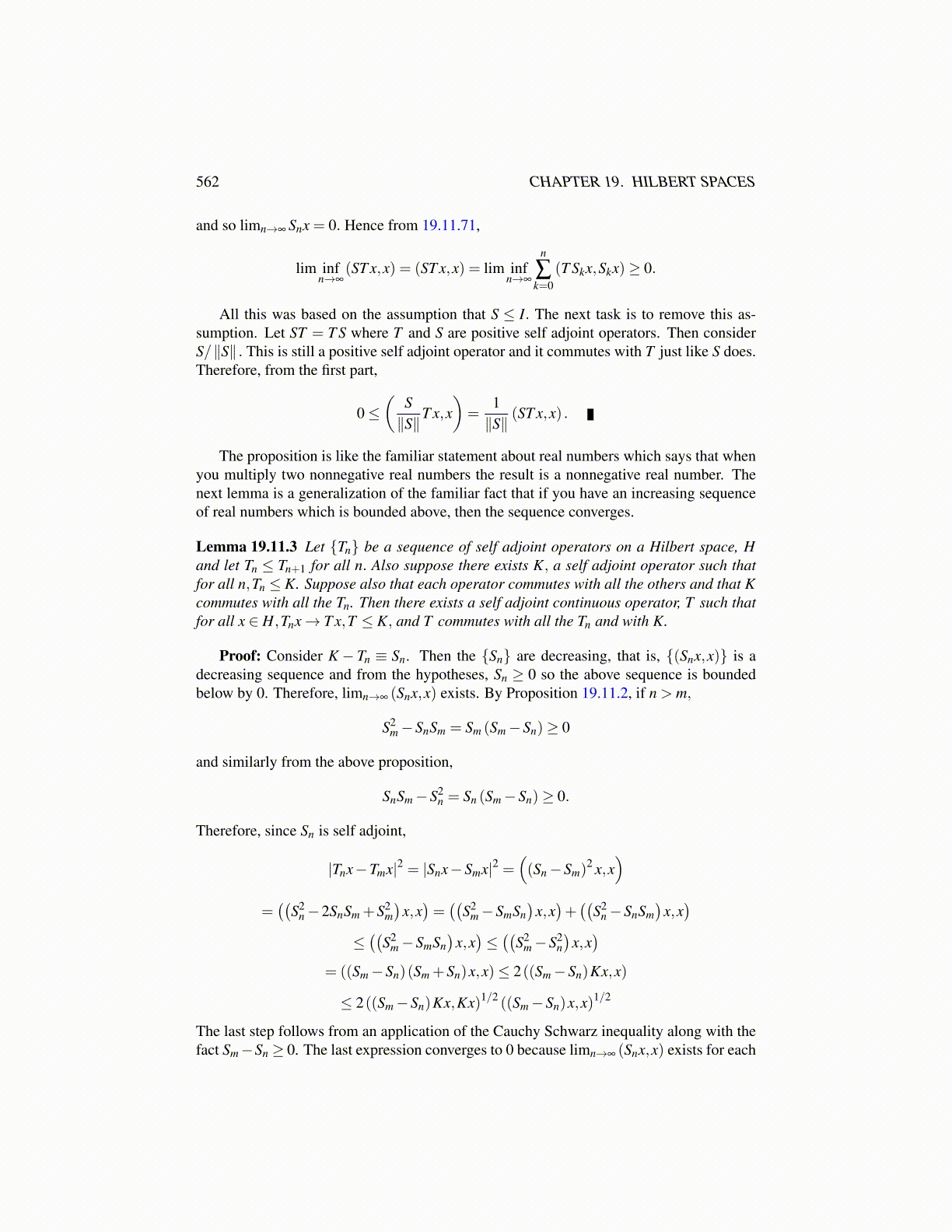
562 CHAPTER 19. HILBERT SPACES
and so limn→∞ Snx = 0. Hence from 19.11.71,
lim infn→∞
(ST x,x) = (ST x,x) = lim infn→∞
n
∑k=0
(T Skx,Skx)≥ 0.
All this was based on the assumption that S ≤ I. The next task is to remove this as-sumption. Let ST = T S where T and S are positive self adjoint operators. Then considerS/∥S∥ . This is still a positive self adjoint operator and it commutes with T just like S does.Therefore, from the first part,
0≤(
S∥S∥
T x,x)=
1∥S∥
(ST x,x) .
The proposition is like the familiar statement about real numbers which says that whenyou multiply two nonnegative real numbers the result is a nonnegative real number. Thenext lemma is a generalization of the familiar fact that if you have an increasing sequenceof real numbers which is bounded above, then the sequence converges.
Lemma 19.11.3 Let {Tn} be a sequence of self adjoint operators on a Hilbert space, Hand let Tn ≤ Tn+1 for all n. Also suppose there exists K, a self adjoint operator such thatfor all n,Tn ≤ K. Suppose also that each operator commutes with all the others and that Kcommutes with all the Tn. Then there exists a self adjoint continuous operator, T such thatfor all x ∈ H,Tnx→ T x,T ≤ K, and T commutes with all the Tn and with K.
Proof: Consider K− Tn ≡ Sn. Then the {Sn} are decreasing, that is, {(Snx,x)} is adecreasing sequence and from the hypotheses, Sn ≥ 0 so the above sequence is boundedbelow by 0. Therefore, limn→∞ (Snx,x) exists. By Proposition 19.11.2, if n > m,
S2m−SnSm = Sm (Sm−Sn)≥ 0
and similarly from the above proposition,
SnSm−S2n = Sn (Sm−Sn)≥ 0.
Therefore, since Sn is self adjoint,
|Tnx−Tmx|2 = |Snx−Smx|2 =((Sn−Sm)
2 x,x)
=((
S2n−2SnSm +S2
m)
x,x)=((
S2m−SmSn
)x,x)+((
S2n−SnSm
)x,x)
≤((
S2m−SmSn
)x,x)≤((
S2m−S2
n)
x,x)
= ((Sm−Sn)(Sm +Sn)x,x)≤ 2((Sm−Sn)Kx,x)
≤ 2((Sm−Sn)Kx,Kx)1/2 ((Sm−Sn)x,x)1/2
The last step follows from an application of the Cauchy Schwarz inequality along with thefact Sm−Sn ≥ 0. The last expression converges to 0 because limn→∞ (Snx,x) exists for each